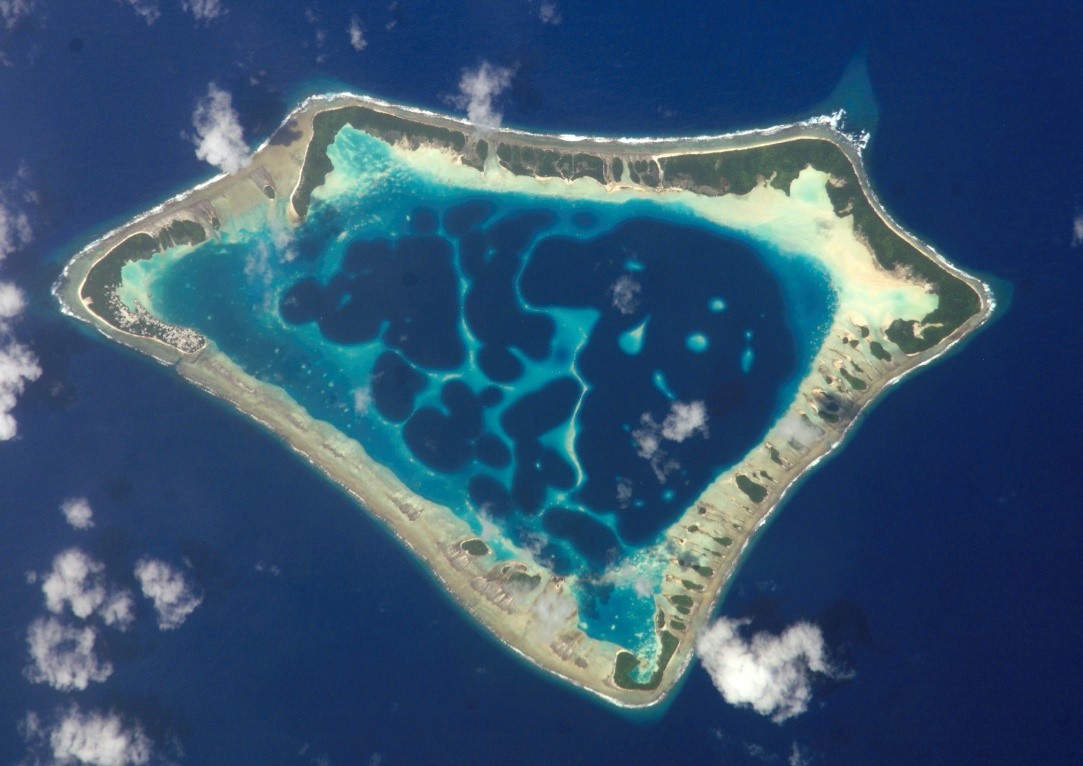The Origin of Modern Atolls: Challenging Darwin’s Deeply Ingrained Theory
Presenter
Prof. Andre Droxler, Ph.D.
Emeritus Professor
Dept. of Earth, Environmental and Planetary Sciences
Rice University
Houston, Texas
Description
In 1842, Darwin identified three types of reefs: fringing reefs, which are directly attached to volcanic islands; barrier reefs, which are separated from volcanic islands by lagoons; and ring reefs, which enclose only a lagoon and are defined as atolls. Moreover, he linked these reef types through an evolutionary model in which an atoll is the logical end point of a subsiding volcanicedifice, as he was unaware of Quaternary glaciations.
As an alternative, starting in the 1930s, several authors proposed the antecedent karst model; in this model, atolls formed as a direct interaction between subsidence and karst dissolution that occurred preferentially in the bank interiors rather than on their margins through exposure during glacial lowstands of sea level. Atolls then developed during deglacial reflooding of the glacial karstic morphologies by preferential stacked coral-reef growth along their margins.
Here, a comprehensive new model is proposed (Droxler and Jorry, 2021), based on the antecedent karst model and well-established sea-level fluctuations during the last 5 million years, by demonstrating that most modern atolls from the Maldives Archipelago and from the tropical Pacific and southwest Indian Oceans are rooted on top of late Pliocene flat-topped banks. The volcanic basement, therefore, has had no influence on the late Quaternary development of these flat-topped banks into modern atolls. During the multiple glacial sea-level lowstands that intensified throughout the Quaternary, the tops of these banks were karstified; then, during each of the five mid-to-late Brunhes deglaciations, coral reoccupied their raised margins and grew vertically, keeping up with sea-level rise and creating the modern atolls.
Recent computer based 3D numerical simulations by Liu et al. (2022) on the Quaternary development of Meiji Atoll in the southern South China Sea, based on interpreted data from a 2020-m-deep borehole drilled on its northeast rim in 2018, show that spatially differential dissolution across margin and interior areas is a critical driver of worldwide central lagoons and atoll formation.
References:
André W. Droxler and Stéphan J. Jorry The Origin of Modern Atolls: Challenging Darwin's Deeply Ingrained Theory, Annual Review of Marine Science 2021 13:1, 537-573
Liu, J., Webster, J.M., Salles, T., Wang, S., Ma, Y., Xu, W., Li, G., and Yan, W., 2022, The formation of atolls: New insights from numerical simulations. Journal of Geophysical Research: Earth Surface, Volume 127, Issue 8, article id. e2022JF006812

